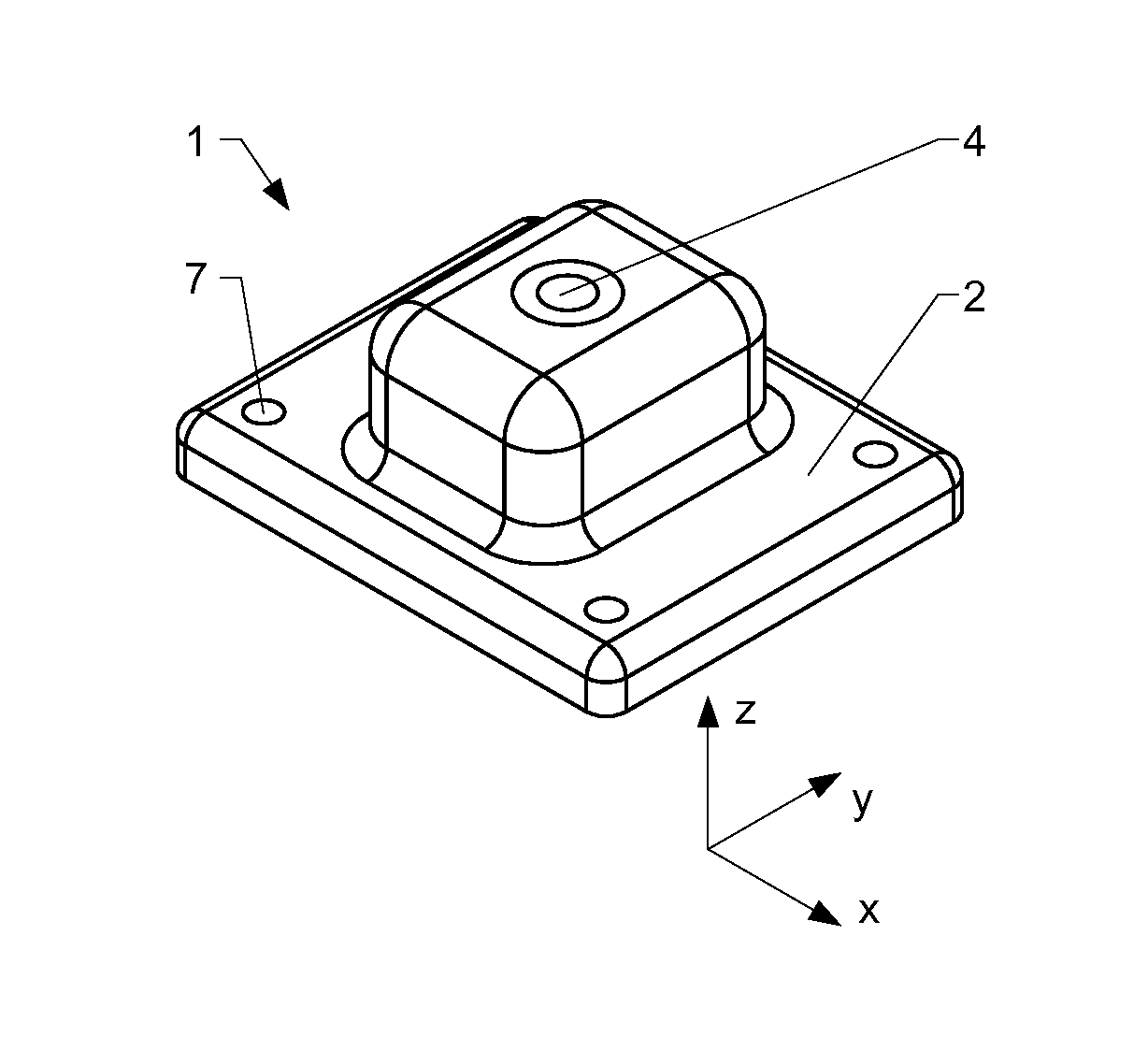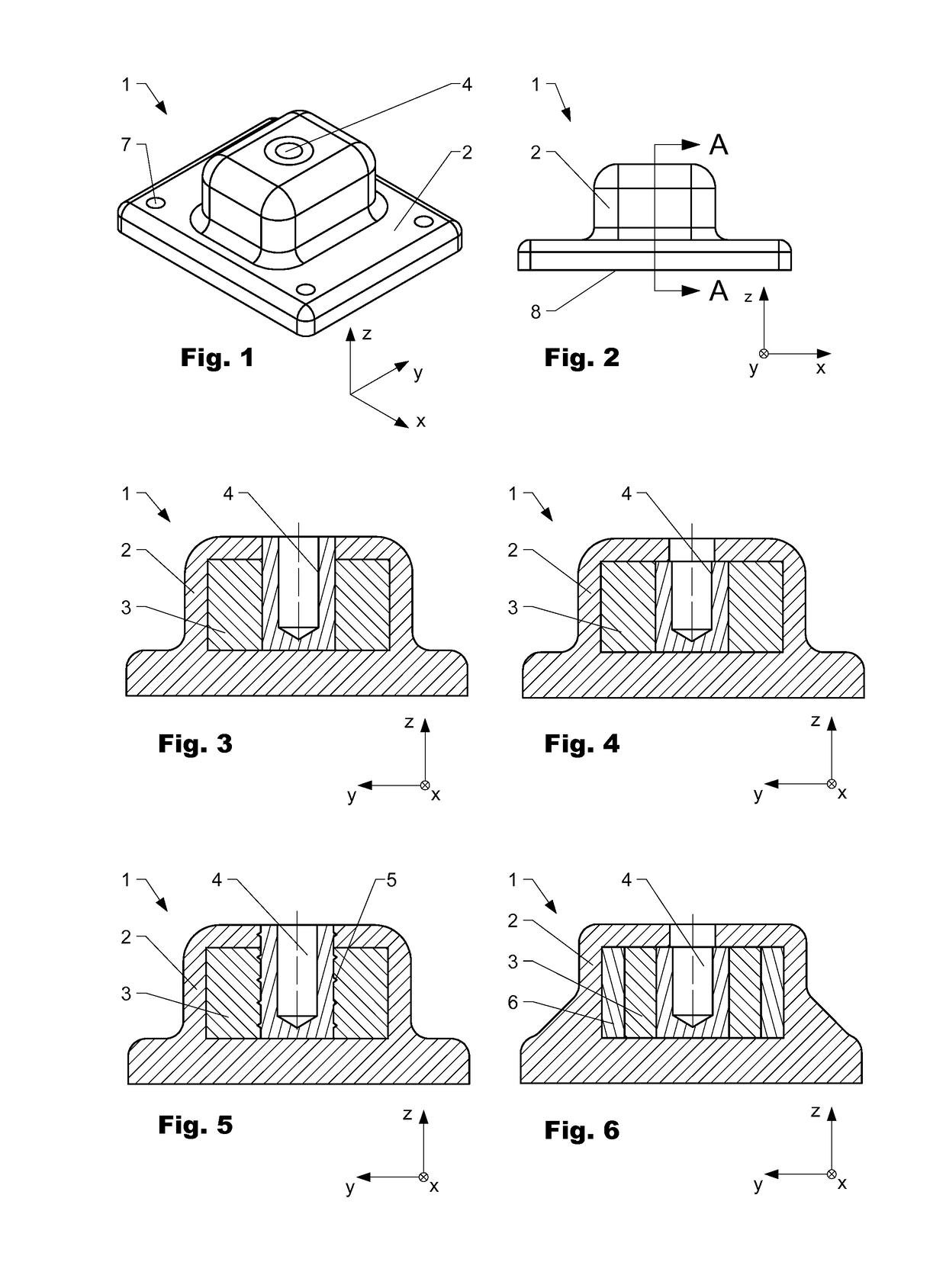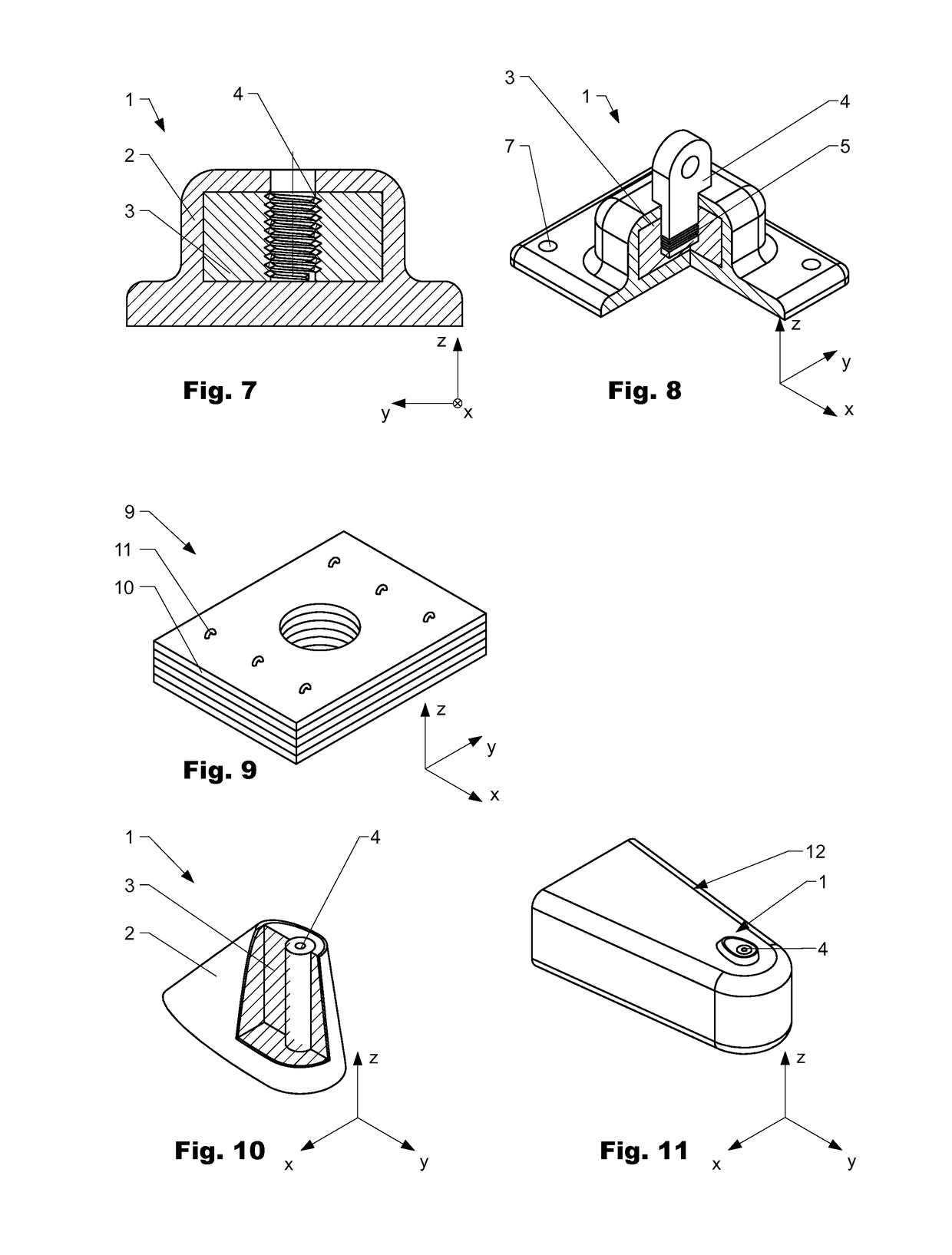Load application element and method to produce a load application element
- Summary
- Abstract
- Description
- Claims
- Application Information
AI Technical Summary
Benefits of technology
Problems solved by technology
Method used
Image
Examples
Embodiment Construction
[0007]The load application elements known from the prior art have several drawbacks which, depending on the application, can turn out to be critical.
[0008]As for lightweight structures, which is an important field of application of composite structures, load application elements may contribute substantially to the total weight of a component part. This particularly holds true for load application elements made from metals, which still constitute the most widely used type of load application elements. As explained above, many composite structures are relatively sensitive to the way how they are loaded which often makes it necessary to distribute external forces that have to be applied to a composite structure over a larger area of the structure. In such applications the minimum spatial dimensions of a load application element may be mostly given by the loading case as well as the type of composite structure. Thus, the weight of a load application element may mainly depend on the spec...
PUM
| Property | Measurement | Unit |
|---|---|---|
| Shape | aaaaa | aaaaa |
Abstract
Description
Claims
Application Information
 Login to View More
Login to View More - R&D
- Intellectual Property
- Life Sciences
- Materials
- Tech Scout
- Unparalleled Data Quality
- Higher Quality Content
- 60% Fewer Hallucinations
Browse by: Latest US Patents, China's latest patents, Technical Efficacy Thesaurus, Application Domain, Technology Topic, Popular Technical Reports.
© 2025 PatSnap. All rights reserved.Legal|Privacy policy|Modern Slavery Act Transparency Statement|Sitemap|About US| Contact US: help@patsnap.com



